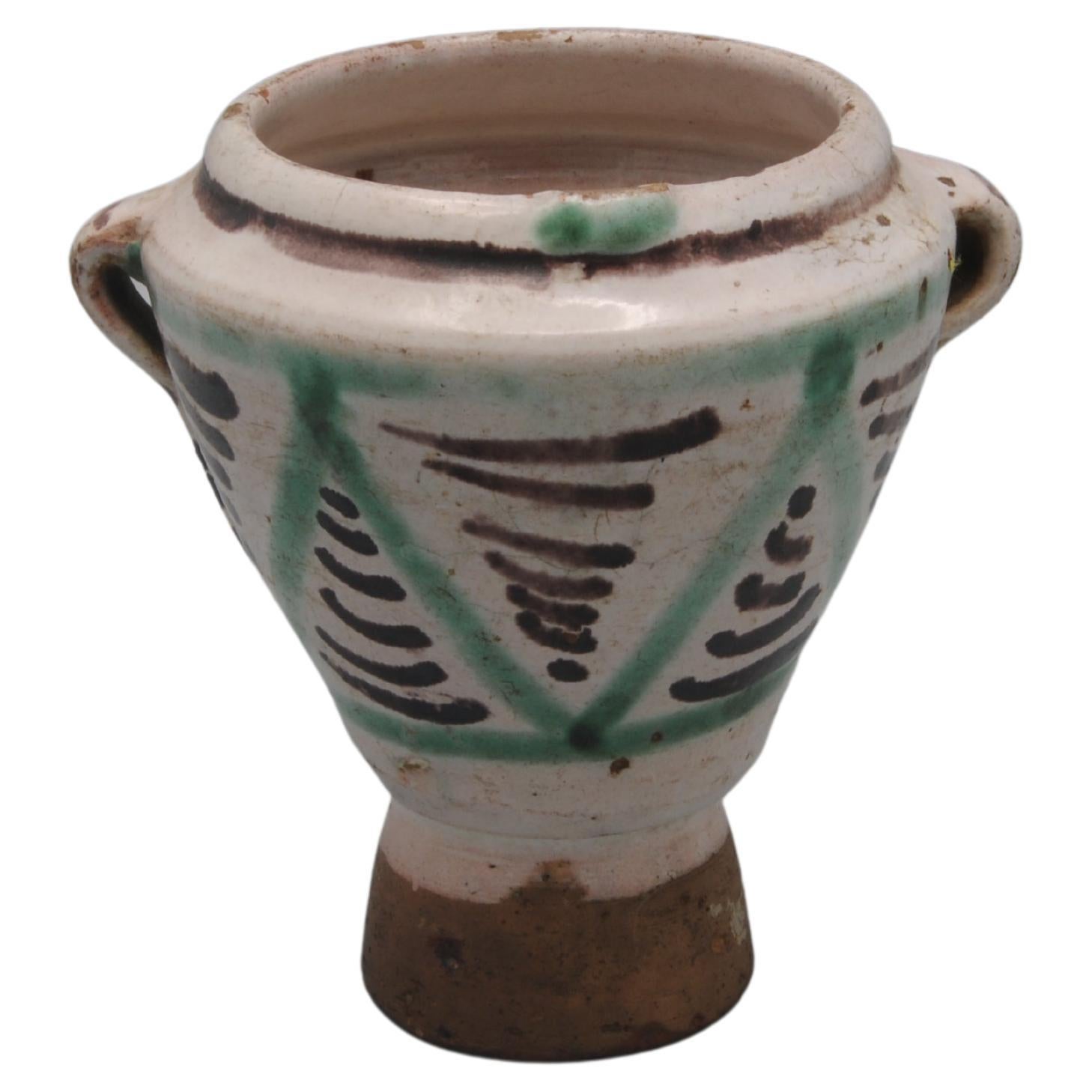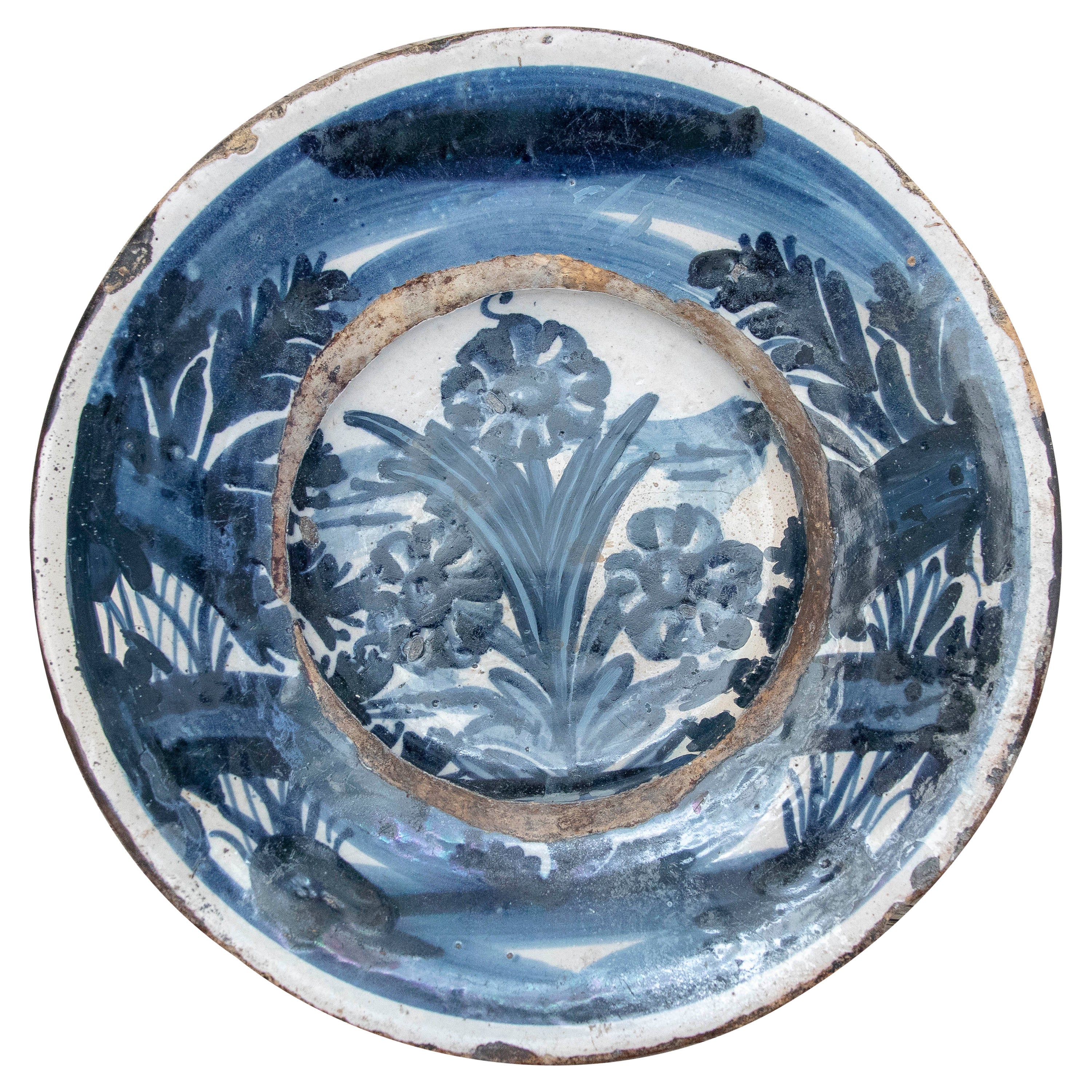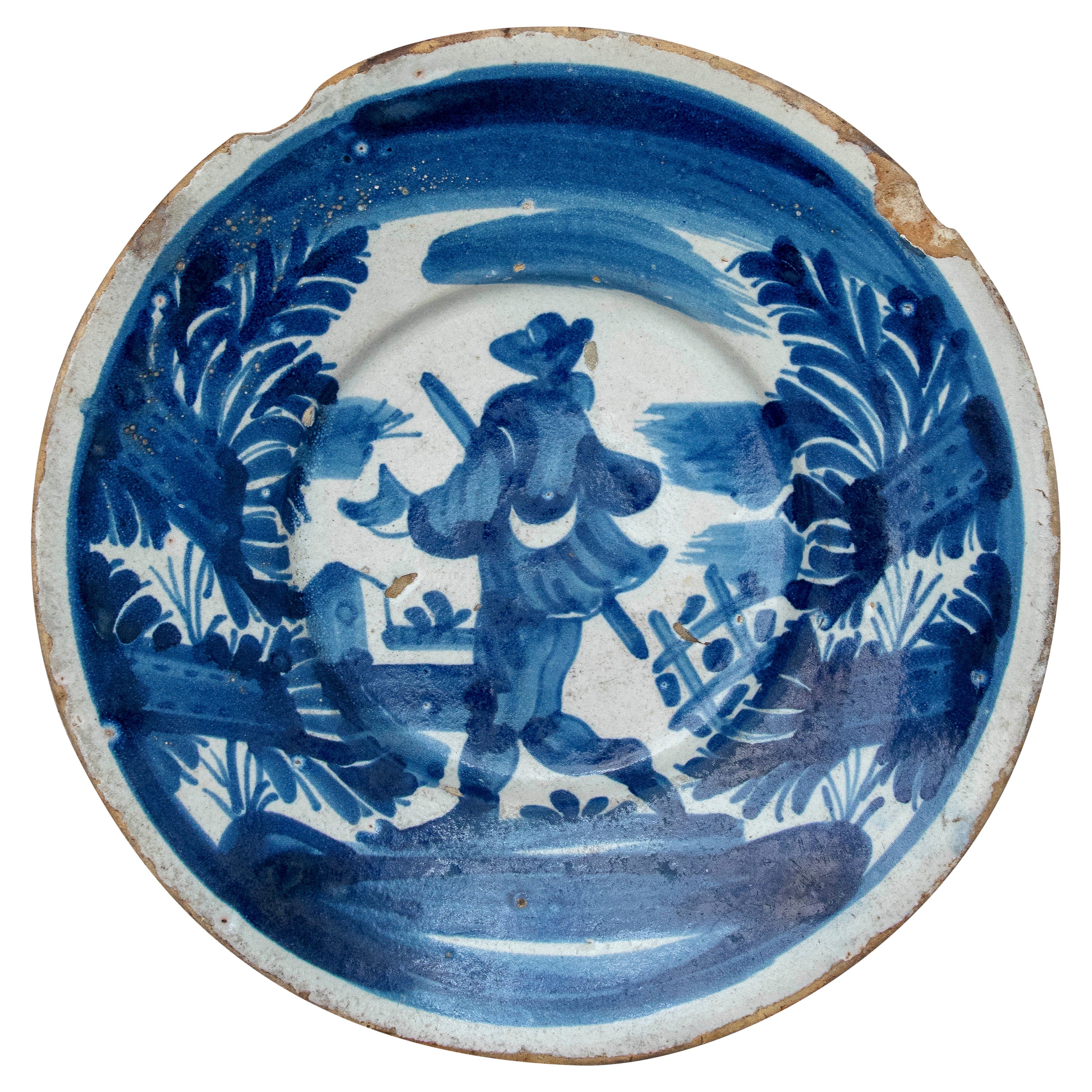Items Similar to Villafeliche Jug, Aragon, Spain, 18th Century
Want more images or videos?
Request additional images or videos from the seller
1 of 6
Villafeliche Jug, Aragon, Spain, 18th Century
About the Item
Late Baroque pottery jug made and decorated with high temperature glazes over a white slip of tin. These motifs are combined with enameled decorations in relief obtained mold. The typology of the piece combines Italian jug with handle ovoid belly and vertical bow, with the peak jug typically Spanish, characterized by the outgoing peak of the mouth. Decorations reveal the oriental influence, with large floral bouquets arranged asymmetrically and complex landscapes with architecture and palm trees, which remove some figures, such as totally Western. The reasons appear pincelados in manganese black, and colored with ocher, blue, green and red, mainly enamels. Aragon ceramic least a century old will be characterized by a strong own, combined with the influences of personality Talavera and Catalonia. You will have three main centers: Teruel, Muel and Villafeliche, the first two with tradition since the 16th century, and the third created in the late 17th century. The Villafeliche will generally be very popular ceramics, but also performed, as in the 18th century, higher quality parts and complexity, both typological and ornamental.
Size: 25 x 18 x 42 cms.
- Dimensions:Height: 16.54 in (42 cm)Width: 9.85 in (25 cm)Depth: 7.09 in (18 cm)
- Style:Neoclassical (Of the Period)
- Materials and Techniques:Ceramic,Glazed
- Place of Origin:
- Period:
- Date of Manufacture:18th Century
- Condition:Wear consistent with age and use. Minor losses.
- Seller Location:Madrid, ES
- Reference Number:
About the Seller
4.9
Vetted Seller
These experienced sellers undergo a comprehensive evaluation by our team of in-house experts.
Established in 1985
1stDibs seller since 2017
298 sales on 1stDibs
Typical response time: 1 to 2 days
- ShippingRetrieving quote...Ships From: Madrid, Spain
- Return PolicyThis item cannot be returned.
More From This SellerView All
- Ceramic Drug Jar or Syrup Jar, Possibly Italy, 18th CenturyLocated in Madrid, ESThe decoration of ceramics in blue tones on a white background was common in Europe as far back as the 17th century (Dutch and English pieces, works in Talavera de la Reina in Spain,...Category
Antique 18th Century Italian Neoclassical Ceramics
MaterialsCeramic
- Jug. Silver. Vitoria, 18th-19th CenturiesLocated in Madrid, ESJug. Silver. Vitoria, 18th-19th centuries. With contrasting and burilated marks, and property initials (TN). Published in Encyclopedia of Spanish and Viceregal American Silver. Bibliography: Fernández, Alejandro; Munoa, Raphael; Rabasco, Jorge. "Encyclopedia of Spanish and Viceregal American Silver". Second edition, corrected and enlarged. Torreangulo Graphic Art, Madrid, 1985. Page 240; page 430, image 1472. Jug or pitcher of silver in its color, with a circular foot decorated with moldings and a string of pearls, semi-ovate belly on which, by means of a band of classicist architectural motifs, a curve, a step and a high neck with a concave profile rise. The mouth, with a sinuous outline and enhanced with another band of plant elements, presents an elevation towards the spout, and covers with a cap or lid topped with a swan-shaped knob. The handle is a feline with a round shape, in an attitude of stalking towards the bird. Typologically, the piece follows neoclassical models, brought from Europe to Madrid and spread from this place. Likewise, it should be noted that the handle with a figurative element of a round shape is not entirely common, although there are known examples in private collections of jars...Category
Antique 19th Century Spanish Neoclassical Serving Pieces
MaterialsSilver
- Spanish Bronze Brazier, 18th CenturyLocated in Madrid, ESSpanish bronze baroque brazier, raised on three legs in the form of curly scroll to the outside, topped with grotesque masks of synthetic features. The container is flattened and sta...Category
Antique 18th Century Spanish Neoclassical Fireplaces and Mantels
MaterialsBronze
- Silver Jar or Jug, De San Faurí, Juan, Spain, Madrid, 18th CenturyBy Spanish ManufactoryLocated in Madrid, ESJug or jug. Silver. DE SAN FAURÍ, Juan (1745-1785). Spain, Madrid, towards the last third of the 18th century. With contrast and burilada marks, and property name (Ochoa). The jug has an oval base with slight curves and a body divided into two areas (wider in the lower half, slightly concave in the upper half) with a series of curved “gajos”; the peak shows simple architectural decoration and smooth areas; the handle is of a type known as brace, with classicist architectural elements; the lid follows the lines of the body and is finished off with a vegetable shape creating a knob. On one of the sides, towards the foot, there is the engraved text "Ochoa", referring to a former owner. Contrasting marks place the creation of the piece in Madrid. Another one that appears could be one of those used by the silversmith Juan de San Faurí. With Felipe V, numerous French influences, along with some Italian ones, came to silverware, both from the hand of craftsmen of these origins and from pieces. Little marking continues in the works, except in important centers such as Madrid, and civil typologies acquired great importance. As in the rest of the country, the Baroque, Rococo and Neoclassical tendencies coexisted at the Court, although, being the center that set the standard for the rest, the former soon departed, introducing Rococo before 1740 or on that date, and Neoclassicism around 1770 (gradually imposing itself from 1780). The jug follows the most common prototype since the arrival of the Bourbons, characterized by its European influence and the great difference it shows with the type known as the “spout jug”. Compare with the Francisco García...Category
Antique Late 18th Century Spanish Neoclassical Serving Pieces
MaterialsSilver
- Mahogany Brazier Box, Spain, 18th CenturyLocated in Madrid, ESBrazier box in mahogany wood, 18th century. On legs in the form of claws with balls the box is raised, with a circular profile and decorated with a mixture of skirting at the bottom...Category
Antique 18th Century Spanish Neoclassical Bedroom Sets
MaterialsMahogany
- Processional Cross, Silver, Barbastro, Aragón, Spain, 16th CenturyLocated in Madrid, ESWith hallmarks. It is necessary to indicate the survival in this piece of some details from the Spanish Gothic silverware (cresting, which appears around the XV century; the endings ...Category
Antique 16th Century Spanish Renaissance Religious Items
MaterialsSilver
You May Also Like
- 18th Century Faience JugLocated in Copenhagen, KBeautiful German faience jug from one of the Northern German factories.Category
Antique 18th Century German Folk Art Pitchers
MaterialsFaience
- Teruel (Aragon) - Spanish Maiolica Mortar, 17th centuryLocated in DELFT, NLCeramic mortar produced at the Teruel pottery workshops in the 17th century. It has a truncated cone shape with three handles and a pourer. It is tin-...Category
Antique 17th Century Spanish Baroque Ceramics
MaterialsMaiolica
- 18th Century Spanish Ceramic Plate with FlowersLocated in Marbella, ES18th century Spanish Ceramic plate with flowers.Category
Antique Mid-18th Century Spanish Ceramics
MaterialsCeramic
- 18th Century Spanish Ceramic Plate with Architectural SceneLocated in Marbella, ES18th century Spanish Ceramic plate with Architectural scene.Category
Antique 18th Century Spanish Ceramics
MaterialsCeramic
- 18th Century Spanish Valencian Manises Lusterware Ceramic PlateLocated in Marbella, ESGlazed ceramics with lustre-painted decoration This is glazed ware, i.e. it is glazed with a white enamel bath, very pure in the best examples, which is f...Category
Antique Mid-18th Century Spanish Ceramics
MaterialsCeramic
- 18th Century Spanish Ceramic Plate with Costumbrist SceneLocated in Marbella, ES18th Century Spanish ceramic plate with Costumbrist scene.Category
Antique Mid-18th Century Spanish Ceramics
MaterialsCeramic
Recently Viewed
View AllMore Ways To Browse
Italian Silver 18th Century
Antique Spanish Silver
Jug With Handle
Spain Antique Ceramics
Antique Spanish Ceramics
Black Jug
Antique Jug Made
Green Jug
Italian Jug
Oriental Ceramics
Large Antique Jug
Large Antique Jugs
Antique Large Jug
Pottery Spain
Blue Glass Jug
Antique Pottery Jug
Ceramic Spanish Large
Antique Oriental Ceramics





